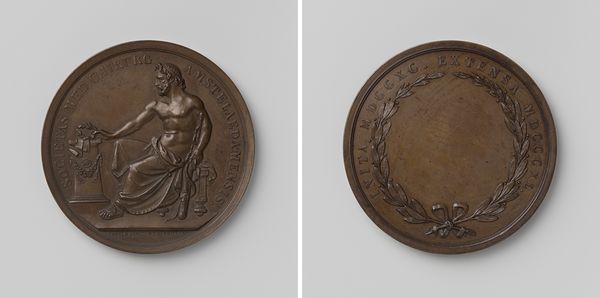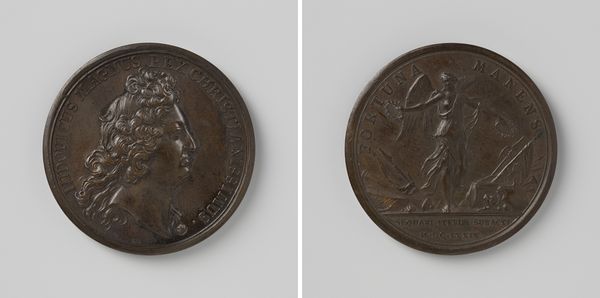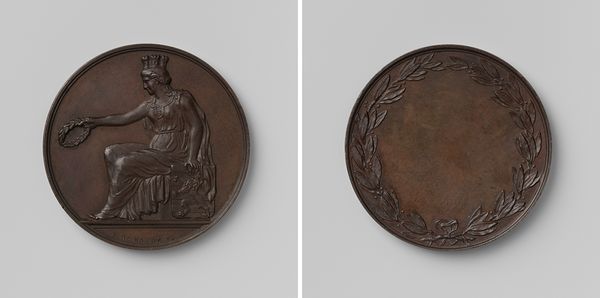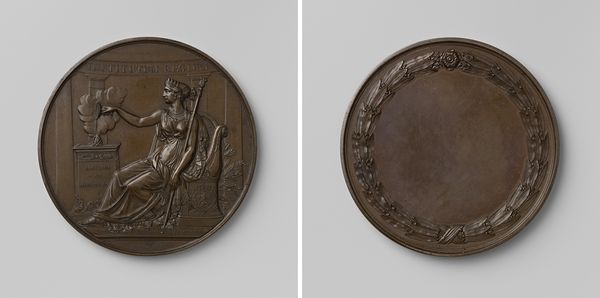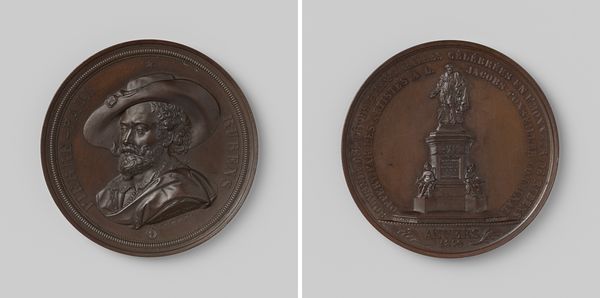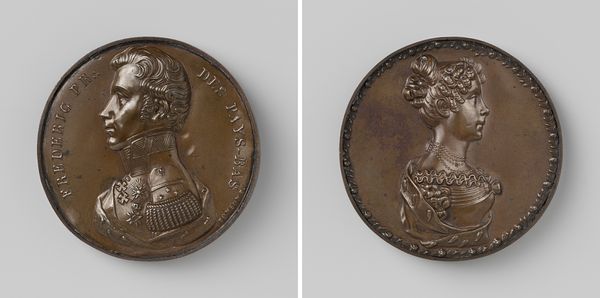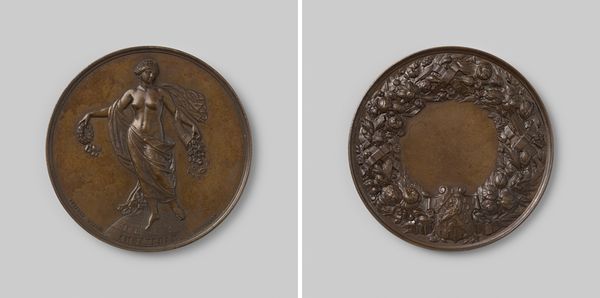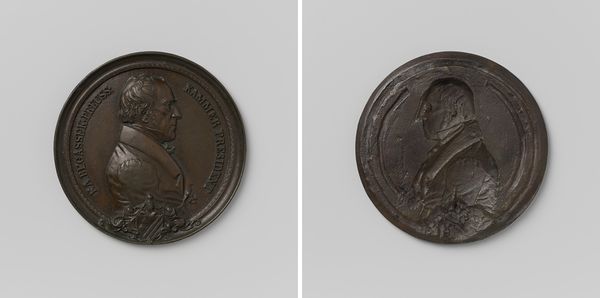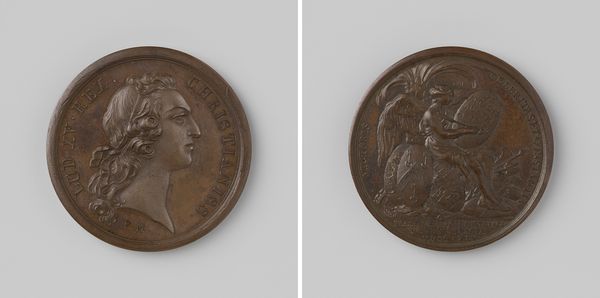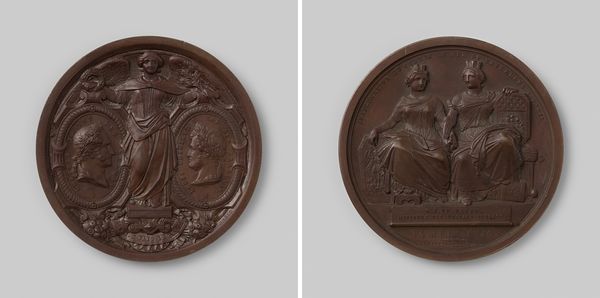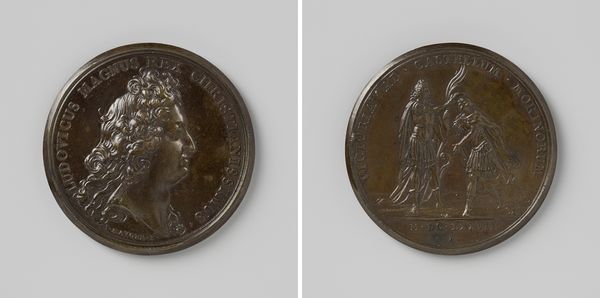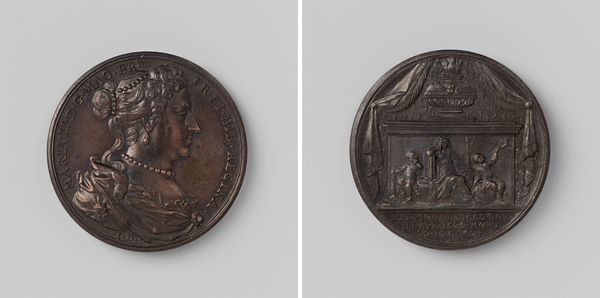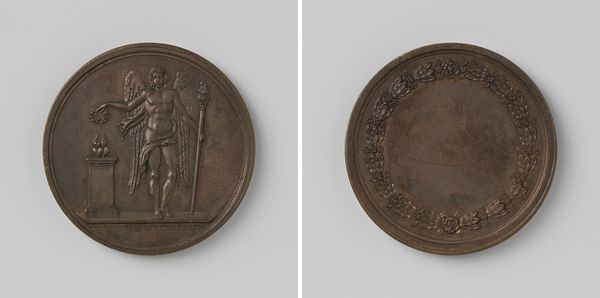
metal, bronze, sculpture
#
portrait
#
neoclacissism
#
metal
#
sculpture
#
bronze
#
sculpture
#
ceramic
#
statue
Dimensions: diameter 6.2 cm, weight 116.84 gr
Copyright: Rijks Museum: Open Domain
Editor: This is “Sir Walter Scott, Engels schrijver,” a bronze sculpture from 1827 by Alfred Joseph Stothard. It looks like a medallion, really – a profile portrait on one side and a figure on the other. What’s interesting about rendering a writer in this form? Curator: I’m interested in the material itself, bronze, a material frequently used for commemorative objects but also weapons and tools. What does it mean to render Scott, an English writer, in such a substance? It speaks to his perceived permanence, his strength…but also, think about the labor involved in creating this object. The process, the casting, the finishing - all this emphasizes value and significance. Do you see any links with the historical context? Editor: It does feel quite…official, doesn’t it? Given that it’s a medallion, I assume these were made in multiples, perhaps for distribution? How would that influence our perception of it, thinking about this as more than just one “original” artwork? Curator: Precisely! The means of production are key. If multiples were created, the idea of Scott’s "genius" becomes a commodity. Think of how it transforms cultural capital. How does that democratize his image or cheapen it? It’s mass production, even in this seemingly “high art” context. Editor: So, the sculpture challenges traditional boundaries. The materiality elevates Scott but the process makes him widely accessible? Curator: Exactly. Look at the contrast between the permanence of bronze and the relative ephemerality of printed words. This medallion almost *monetizes* literary fame. It asks us to think about labor, materials and production in relation to cultural value and national identity. Editor: I never considered the interplay between literary merit and mass production like that! It definitely provides an alternate lens for analysis. Curator: Right? Material speaks, especially in relation to its context. It’s made me rethink how we memorialize artists in this era.
Comments
No comments
Be the first to comment and join the conversation on the ultimate creative platform.
